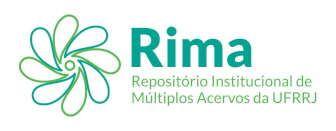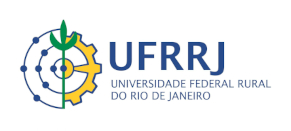Please use this identifier to cite or link to this item:
https://rima.ufrrj.br/jspui/handle/20.500.14407/9351Full metadata record
| DC Field | Value | Language |
|---|---|---|
| dc.contributor.author | Silva, Alessandro de Paula | |
| dc.date.accessioned | 2023-12-21T18:38:07Z | - |
| dc.date.available | 2023-12-21T18:38:07Z | - |
| dc.date.issued | 2014-12-11 | |
| dc.identifier.citation | SILVA, Alessandro de Paula. Fitotoxidez e crescimento de espécies florestais nativas submetidas à aplicação de herbicidas. 2014. 104 f. Tese (Doutorado em Ciências Ambientais e Florestais) - Instituto de Florestas, Universidade Federal do Rio de Janeiro, Seropédica - RJ, 2014. | por |
| dc.identifier.uri | https://rima.ufrrj.br/jspui/handle/20.500.14407/9351 | - |
| dc.description.abstract | Uma das grandes dificuldades, que os programas de restauração florestal se deparam é o controle de plantas daninhas. Dentre os métodos de controle, encontra-se o químico. No entanto, determinados produtos químicos poderão acarretar toxicidez às plantas florestais podendo acarretar morte destas. Dessa forma, objetivando avaliar a fitotoxicidade de herbicidas em espécies florestais nativas da Mata Atlântica três estudos foram conduzidos. O primeiro objetivou avaliar a tolerância de 14 espécies florestais aos herbicidas pós-emergentes mesotrione, fluazifop-p-butyl, setoxidim, quizalofop-p-ethyl e nicosulfuron. Os tratamentos consistiram da aplicação dos herbicidas e testemunha (sem aplicação). Durante um período de 56 dias, avaliou-se a fitotoxicidade desses produtos através de uma escala de notas, estabelecendo-se o agrupamento das ocorrências em classes de fitotoxicidade. Computaram-se os incrementos em altura (H) e diâmetro do coleto (DC). Posteriormente, a parte aérea das plantas foi coletada para a determinação da matéria seca. Maiores sintomas de fitotoxicidade foram observados quando da aplicação do mesotrione, ocasionando intoxicação em maior número de espécies. Os herbicidas não influenciaram o crescimento das plantas em H e DC e produção de matéria seca. No segundo estudo, avaliou-se a tolerância de quatro espécies florestais nativas da Mata Atlântica a doses (0; 0,16; 0,32; 0,48; 0,64; 1,28; 1,92 e 2,56 L ha-1) de glyphosate. A fitotoxicidade foi avaliada através de uma escala de notas, estabelecendo-se o agrupamento das ocorrências em classes de fitotoxicidade, durante 56 dias. Determinaram-se os incrementos em H e DC, bem como a matéria seca da parte aérea. As espécies florestais avaliadas apresentaram diferentes graus de tolerância às doses de glyphosate. Doses ≥ a 0,64 L ha-1 influenciaram o crescimento da maioria das espécies florestais agravando o quadro de intoxicação das plantas concomitante ao aumento das doses. O terceiro estudo objetivou-se avaliar a tolerância de quatro espécies nativas da Mata Atlântica a três herbicidas pós-emergentes, utilizados no primeiro estudo, em condições de campo, bem como a influência desses produtos no capim braquiária. Para tanto, selecionou-se uma área com predominância de Urochloa humidicola e efetuou-se o plantio das espécies florestais em março de 2014. Em junho de 2014, realizou-se a aplicação dos tratamentos que consistiram da aplicação dos herbicidas em área total das parcelas: mesotrione (0,4 L ha-1); fluazifop-p-butyl (1,0 L ha-1); e nicosulfuron (1,5 L ha-1) mais a testemunha (sem aplicação de herbicidas) sendo realizado coroamento das plantas. Avaliou-se a sobrevivência e o incremento em altura das plantas florestais aos 56 dias após aplicação. A influência dos herbicidas no capim braquiária foi avaliada por registro fotográfico e determinação da massa seca estocada na parte aérea aos 56 dias após aplicação. As espécies florestais foram tolerantes aos herbicidas em condições de campo em que estes não afetaram o crescimento em altura. O fluazifop-p-butyl proporcionou maior controle do capim braquiária. No entanto, aos 56 dias após aplicação houve a recuperação da forrageira. | por |
| dc.description.sponsorship | CAPES | por |
| dc.format | application/pdf | * |
| dc.language | por | por |
| dc.publisher | Universidade Federal Rural do Rio de Janeiro | por |
| dc.rights | Acesso Aberto | por |
| dc.subject | Intoxicação | por |
| dc.subject | tolerância | por |
| dc.subject | herbicidas pós-emergentes | por |
| dc.subject | Intoxication | eng |
| dc.subject | tolerance | eng |
| dc.subject | post-emergence herbicide | eng |
| dc.title | Fitotoxidez e crescimento de espécies florestais nativas submetidas à aplicação de herbicidas | por |
| dc.title.alternative | Phytotoxicity and growth of native forest species subjected to the application of herbicides | eng |
| dc.type | Tese | por |
| dc.description.abstractOther | One of the greatest difficulties faced by forest restoration programs is the weed control. The use of herbicide is one of the most important and viable options for weed control. However, certain chemicals can cause toxicity or even kill the forest plants. Thus, three studies were conducted to assess the phytotoxicity of herbicides to native species from the Atlantic Forest in Brazil. The first experiment aimed to evaluate the tolerance of 14 forest species to post-emergence herbicides mesotrione, fluazifop-p-butyl, sethoxydim, quizalofop-p-ethyl and nicosulfuron. The treatments consisted of herbicide application and one control (no herbicide application). The phytotoxicity was analyzed at 7, 14, 21, 28 and 56 days after herbicide application through a percentage rating scale. We assessed the increases in height, steam diameter and the plant shoot dry matter at 56 days after application. It is seen that mesotrione was the most toxic herbicide to plants, which was observed in most plant species and also in most individuals in present study, but with a restoration of plant health in the end of the experiment. In general, the herbicides did not affect height, steam diameter and shoot dry matter of plants. In the second study, it was assessed the tolerance of four native species from Atlantic Forest to reduced rates (0, 0.16, 0.32, 0.48, 0.64, 1.28, 1.92 and 2.56 L ha-1) of glyphosate, which were equivalent to the recommended applictation rate for the control of braquiaria grass (0, 4, 8, 12, 16, 32, 48 and 64 %, respectively). The phytotoxicity was evaluated at 7, 14, 21, 28 and 56 days after application by using a percentage rating scale. After that, a grouping of plants in phytotoxicity classes was done. The increases in height, stem diameter and shoot dry matter (MSPA) were determined at 56 days after application. The forest species presented different degrees of tolerance to glyphosate doses. The glyphosate rates ≥ 0.64 L ha-1 influenced the growth of most forest species, worsening the intoxication of plants forward to increases in doses of glyphosate applied. The third study aimed to evaluate the tolerance of four species native from Atlantic Forest to three post-emergence herbicides, used in the first study, under field condition, as well as the influence of these chemicals in Urochloa humidicola (Rendle) Schweick. We selected an experimental field with predominance of U. humidicola in Seropédica, RJ, Brazil. Four forest species was planted in march 2014. The treatments consisted of the broadcast application of three post-emergence herbicides: mesotrione (0.4 L ha-1 of the commercial product); fluazifop-p-butyl (1.0 L ha-1 of the commercial product); and nicosulfuron (1.5 L ha-1 of the of the commercial product) and one control (without application of herbicide) with controlling the weeds growing around the base of seedling by hoeing, in june 2014. The influence of herbicides on forest species was assessed at 56 days after application through evaluating the symptoms and survival of plants as well as calculating the increase in height. The influence of herbicides in U. humidicola was analyzed by photographic recording and by determination of dry matter stored in the shoot at 56 days after application. The forest species were in general tolerant to herbicides. The herbicides did not affect the growth of forest species. Fluazifop-p-butyl was the most effective herbicide for controlling forage in the first 30 days after application, as indicated by visual assessment. However, it was observed a subsequent reestablishment of forage after the intoxication, which was indicated by no significant effect of the treatments in dry matter of this plant at 56 days after application. | eng |
| dc.contributor.advisor1 | Leles, Paulo Sergio dos Santos | |
| dc.contributor.advisor1ID | 699.670.836-20 | por |
| dc.contributor.advisor-co1 | Resende, Alexander Silva de | |
| dc.contributor.advisor-co1ID | 035.567.497-18 | por |
| dc.contributor.advisor-co2 | Machado, Aroldo Ferreira Lopes | |
| dc.contributor.advisor-co2ID | 031.360.456-88 | por |
| dc.contributor.referee1 | Leles, Paulo Sergio dos Santos | |
| dc.contributor.referee2 | Santos, José Barbosa dos | |
| dc.contributor.referee3 | Moraes, Luiz Fernando Duarte de | |
| dc.contributor.referee4 | Freitas, André Felippe Nunes de | |
| dc.contributor.referee5 | Silva, Eduardo Vinícius da | |
| dc.creator.ID | 047.577.116-89 | por |
| dc.creator.Lattes | http://lattes.cnpq.br/7935430042226186 | por |
| dc.publisher.country | Brasil | por |
| dc.publisher.department | Instituto de Florestas | por |
| dc.publisher.initials | UFRRJ | por |
| dc.publisher.program | Programa de Pós-Graduação em Ciências Ambientais e Florestais | por |
| dc.subject.cnpq | Recursos Florestais e Engenharia Florestal | por |
| dc.thumbnail.url | https://tede.ufrrj.br/retrieve/61134/2014%20-%20Alessandro%20de%20Paula%20Silva.pdf.jpg | * |
| dc.originais.uri | https://tede.ufrrj.br/jspui/handle/jspui/3171 | |
| dc.originais.provenance | Submitted by Jorge Silva (jorgelmsilva@ufrrj.br) on 2019-12-13T18:06:13Z No. of bitstreams: 1 2014 - Alessandro de Paula Silva.pdf: 3828135 bytes, checksum: 2778321c8bce4b1fca914056492b5115 (MD5) | eng |
| dc.originais.provenance | Made available in DSpace on 2019-12-13T18:06:13Z (GMT). No. of bitstreams: 1 2014 - Alessandro de Paula Silva.pdf: 3828135 bytes, checksum: 2778321c8bce4b1fca914056492b5115 (MD5) Previous issue date: 2014-12-11 | eng |
| Appears in Collections: | Doutorado em Ciências Ambientais e Florestais | |
Se for cadastrado no RIMA, poderá receber informações por email.
Se ainda não tem uma conta, cadastre-se aqui!
Files in This Item:
| File | Description | Size | Format | |
|---|---|---|---|---|
| 2014 - Alessandro de Paula Silva.pdf | Documento principal | 3.74 MB | Adobe PDF |  View/Open |
Items in DSpace are protected by copyright, with all rights reserved, unless otherwise indicated.

